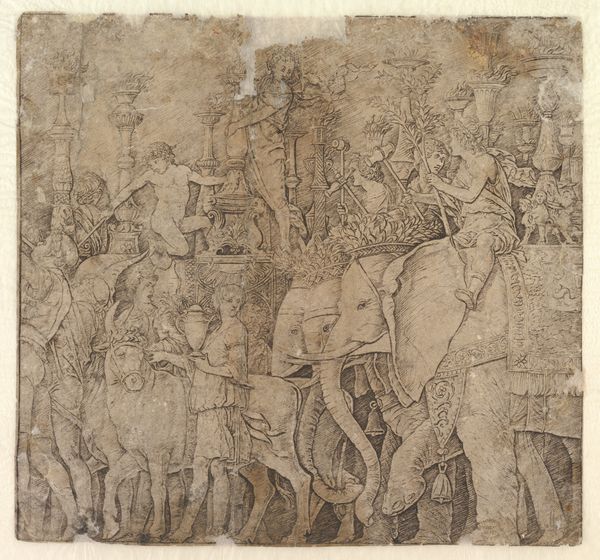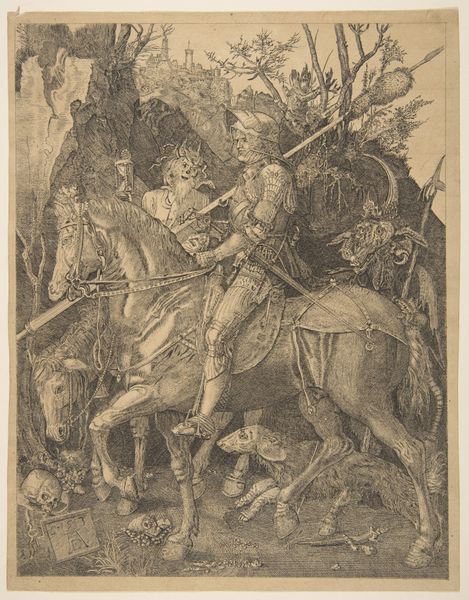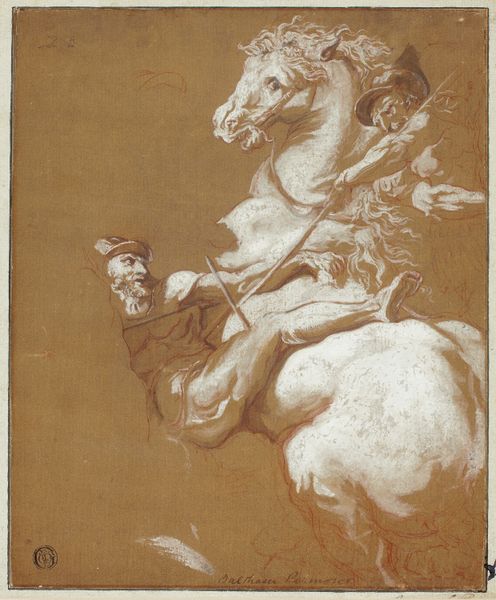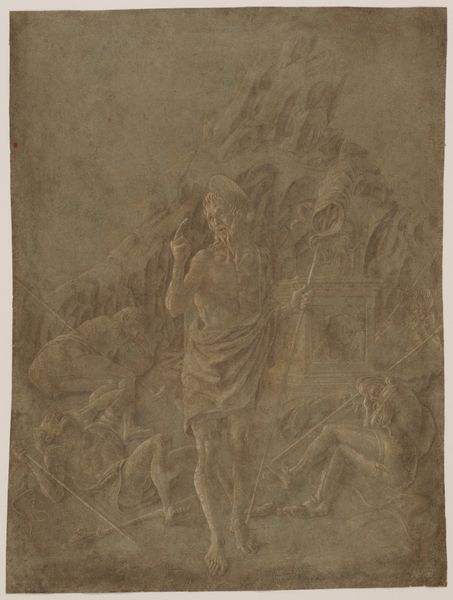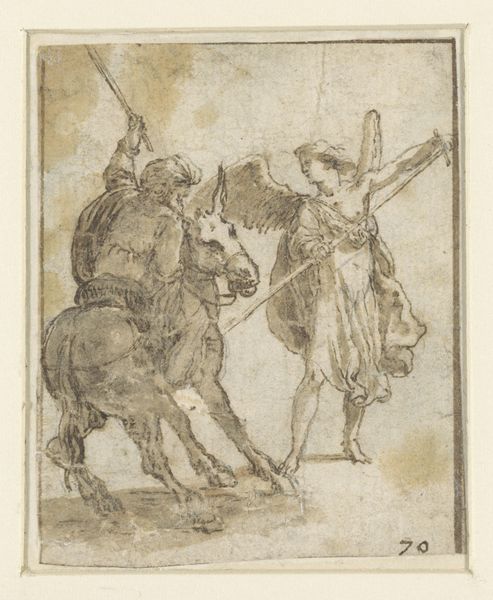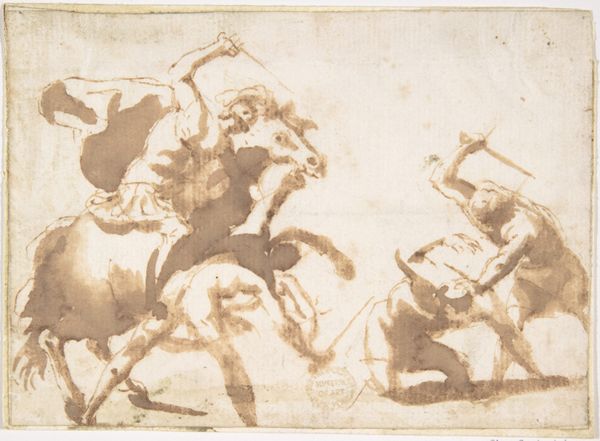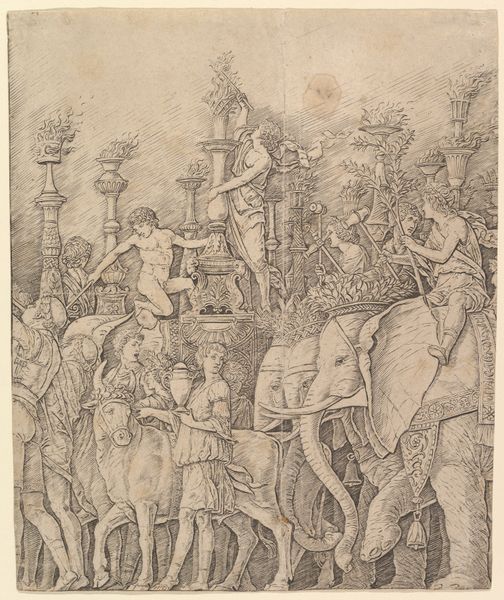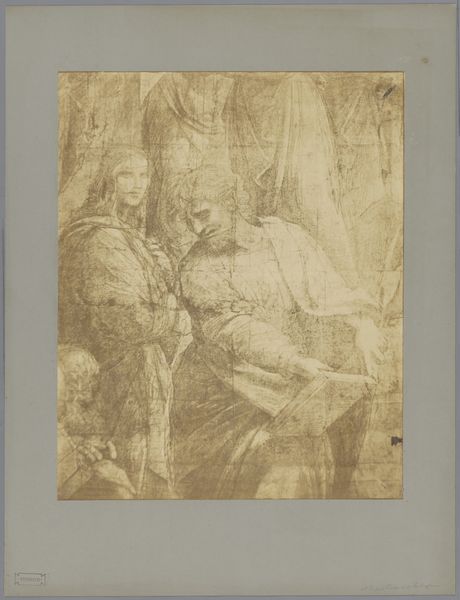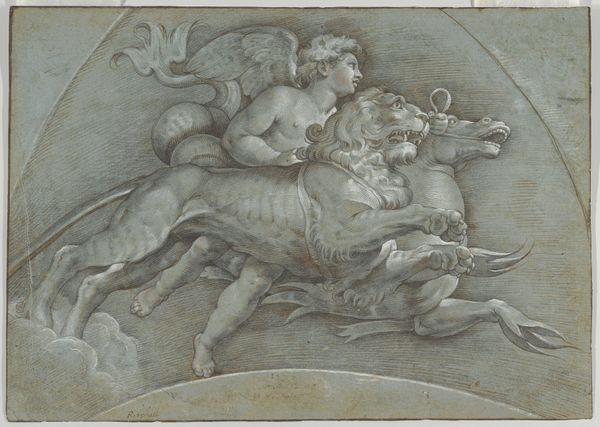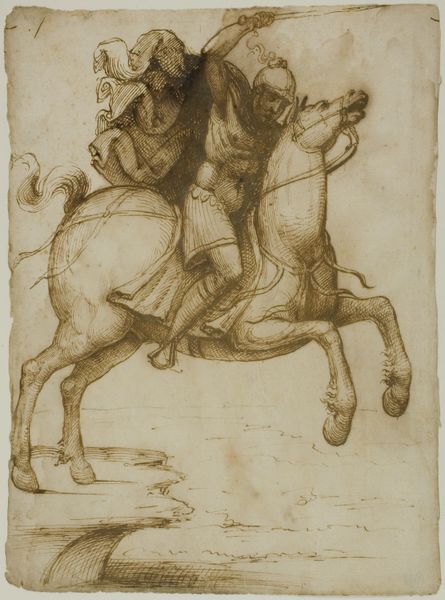
Study for the Equestrian Monument to Francesco Sforza 1480 - 1487
0:00
0:00
drawing, paper, pencil, charcoal
#
portrait
#
drawing
#
landscape
#
charcoal drawing
#
figuration
#
paper
#
form
#
11_renaissance
#
oil painting
#
pencil
#
horse
#
men
#
line
#
charcoal
#
history-painting
#
italian-renaissance
Dimensions: 11 1/16 x 10 in. (28.1 x 25.4 cm)
Copyright: Public Domain
Editor: This is "Study for the Equestrian Monument to Francesco Sforza" created between 1480 and 1487 by Antonio Pollaiuolo. It's a charcoal drawing on paper, and what strikes me most is the dynamic energy captured despite being a preliminary sketch. What do you see in this piece, focusing on its artistic construction? Curator: The formal qualities are indeed captivating. Observe how Pollaiuolo utilizes line to create a sense of movement. The diagonal lines of the horse's legs, the rider's lance, and even the fallen figure all contribute to this upward thrust. Note the artist’s focus on anatomical correctness and dynamism, particularly in the musculature of the horse, achieved through precise delineation. Editor: Yes, the anatomy is impressive, and it creates that dynamic feel. Does the medium influence our understanding of form and structure in the piece? Curator: Certainly. The charcoal medium lends itself to creating depth and volume through chiaroscuro. Notice how Pollaiuolo manipulates light and shadow to accentuate the contours of the figures, defining their three-dimensionality on a two-dimensional surface. Editor: So the medium, in conjunction with form, plays a large role in the overall impression the artwork leaves the viewer with? Curator: Precisely. And we must not forget how these individual elements harmonize to produce the overall unity and monumentality inherent within the composition. The convergence of line, form and contrast establishes a sophisticated image intended for posterity. Editor: That's fascinating, I'm now able to appreciate it for the movement, technique, and skill conveyed within the medium! Curator: I concur. Focusing on those qualities brings greater nuance to the appreciation of form.
Comments
No comments
Be the first to comment and join the conversation on the ultimate creative platform.
